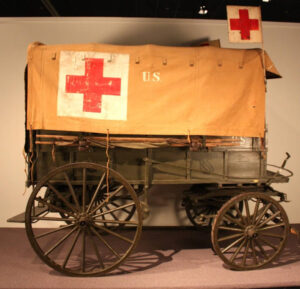Rabbit holes. We’re not talking about burrows dug in the ground by small herbivores with large ears. We’re talking about the other kind, those that demand attention and suck up time and energy. Writers often talk about going down rabbit holes. The Cambridge Dictionary defines it as: “a situation in which you become so interested in a subject or an activity that you cannot stop trying to find out about it or doing it.”
It might be a plot that’s not working and needs time to evolve. It might be discovering all aspects of a character, or all the facets of a setting. The rabbit hole called research, a fascinating, time-consuming, and ultimately satisfying place to be. This month Janet and D. Z. look at the rabbit holes we’ve been digging.
Way Back When
Janet Dawson

I’m writing a historical novel set in New Mexico in the nineteenth century. As I craft my story, I need information that will make the readers believe they are in that time and place, looking through my protagonist’s eyes.
Research rabbit holes lead me to the internet and books. Sometimes I do research in person, such as interviews and figuratively picking the brains of those who have the knowledge I need. Then there’s location research, going to a place and tramping around. For a historical novel, that involves looking at the modern-day environment and imagining how it looked way back when.
My protagonist is the daughter of an army officer stationed at a frontier fort. While writing the book, I’ve headed down the clothes rabbit hole, so I could figure out what she’s wearing. Then there was the social gathering rabbit hole, since an important scene takes place at a baile, which is a local dance. The internet provided wonderful videos of couples demonstrating everything from the waltz to the polka.
Years ago, I encountered some frontier army reenactors at a national park. I learned that officers in the frontier army and their wives repurposed Civil War-era ambulances and turned them into the equivalents of travel trailers, transporting families and possessions from fort to fort. I’ve also found references to this in books, because many officers’ wives wrote memoirs later in their lives. And the Frontier Army Museum at Fort Leavenworth provides a photo of an ambulance on their website.
In the early chapters of the book, my protagonist and her companions are traveling to the fort in an ambulance, singing to pass the time. The internet tells me the names of songs popular way back when—“I’ll Take You Home Again, Kathleen” and the Civil War ballad “Lorena.” Because it’s New Mexico, I asked my New Mexico relatives to suggest Spanish-language songs that were popular in the 1870s, and before. Enter “La Golondrina” (the swallow), a song that’s still popular today.
I’ve been poring over old photos and maps. Santa Fe is a large city now, with old established neighborhoods full of mature trees and old homes. Large modern buildings loom downtown. But it didn’t look that way in time my book takes place. Not as many trees, for one thing. The pictures shows horses and oxen pulling wagons on the dirt streets surrounding the plaza. Indians from nearby pueblos lead burros loaded with firewood, to sell to local residents. The maps show a much smaller city, where the area around the plaza had gambling halls, livery stables, and corrals.
In southern New Mexico, Lincoln and nearby Fort Stanton are important locations in the book. Both are well-preserved, though many buildings have been torn down or altered. The officers’ quarters, for example were extensively remodeled as the nineteenth century gave way to the twentieth. During the time I’m writing about, those quarters were one story, and the kitchens were separate buildings out back, as was often the custom then. Both Lincoln and the fort are now surrounded by wooded hills and mountains. Old photos show a different landscape, open range, with lots of grass and brush.
From Fort Stanton to Lincoln it’s about ten miles on a paved highway, a journey of about fifteen minutes in a car. In the 1870s, the route would have followed the Rio Bonito, shaving a couple of miles off that journey. And how long would that take? My journey down that particular research rabbit hole tells me that it would take a couple of hours for a horse to cover the distance.
Where will the next research rabbit hole lead me? Who knows? I’ve already found myself digging for information I didn’t realize I needed. But that’s my process. I write myself into a question mark, and then start digging to find what I need.
Stuck in the Past
D. Z. Church

Writing historical mysteries challenges one to write a great story while painting a portrait of the times, including the clothes, the speech patterns, the mores, what it took to get through a day, how people interacted, and what they dreamed. And, well, everything else.
For instance, in the late 1870s, few houses had furnaces or indoor plumbing. Outside big cities, none had electricity. Yes, kitchens were kitchens, but hot water was provided by a boiler to the side of most wood-burning stoves that, if the stove was kept warm, kept warm water. Or you could boil water on a burner, about an eight-stick bundle. The whole hot water thing led me to learn more about wood-burning stoves than I ever thought I’d need to know, especially since the stove at our family farm had been converted from wood, and I thought I was pretty knowledgeable about it. Especially the bun-warmer that kept the chicks toasty until they spilled out and ran amuck on the kitchen floor.
Some houses of the time had coal-burning furnaces; most didn’t, especially out in the sticks. Still, it is not as simple as having a big, old octopus coal furnace in the dugout cellar. For instance, the heat registers were between floors, not in each room, so that the heat rose up through the house, warming the upper floors. The between-floor registers were a gift to kids everywhere who wanted to keep tabs on the adults on the floors below, making it pretty hard to keep a secret. The furnaces were deadly, too; bedroom windows were left open two inches every night, rain or snow.
If you’ve gotten this far, here’s the deal. You tell yourself you need to know this and that to make the world you are building and the time period real. All true, but research is a rabbit hole of magnificent proportions down which you can bound, gleefully, happily, joyously wasting your time. It’s fun to learn; it’s fun to chase each question you have.
One of my most recent rabbit holes involved how the age of a body was identified in the late 1870s; another was what drugs were used for blood loss and whether transfusions were even possible. Well, yes and no. So, I let my really, really smart undertaker figure it out. That was the rabbit hole from hell. I dwelt in the possibilities for days. All to be accurate and appropriate to my characters at hand.
My current rabbit hole is Mississippi riverboats. The more I read, the more questions I have, or had, until, digging and digging and not writing a whit, I found the perfect picture book that not only answered but showed me the answers to most of my questions. And, no, I don’t need to know how to pilot a riverboat or how to signal the boat’s arrival, turns out with organ-like pipes and steam, and a unique tune … but I do. That’s the rabbit hole, that’s the warren, that’s where all those baby bunnies, cute and cuddly, eat up your writing time.
When telling a tale, you need to know what you need to know, no more, no less. But if you’re a writer, you come with this inborn curiosity that, when given rein, will tumble you further and further down that hole of research and often over the most mundane of things. It is deadly. Some books never do get written because of it. And some others do, because often while tumbling, a nugget for a new book pops out.

From Janet: Bit Players and Pepper Shakers
Bit Player is a novel featuring my Oakland private investigator Jeri Howard. The book has several chapters that take place in 1941, as Jeri digs into the past, determined to find out if her grandmother, Jerusha Layne, had anything to do with an unsolved Hollywood murder. Jerusha worked in the movies way back when, first as an extra, then a bit player. And what is a bit player?
As I write in the first chapter:
“Then she worked as a bit player, or day player, as they were sometimes called. Bit players were different from extras, because they had a few lines of dialogue, or they did bits, specific pieces of business. Jerusha played telephone operators, hat check girls, waitresses.”
Now, pepper shaker.
That thing that’s on your kitchen counter that you use to shake black pepper onto the food you’re preparing. However, I encountered a different meaning when I went looking for slang words and terms that were in use in the 1940s. Words that would give that ring of authenticity to the book’s dialogue.
In an early chapter, Jerusha and her housemate Pearl are talking about parts they’ve had or will have in movies. Pearl’s getting ready to shoot a movie called The Maltese Falcon, staring Humphrey Bogart. Both women have worked with Bogart before, Jerusha in They Drive By Night, which starred Bogart and George Raft.
And Pearl says: “Raft, can that man dance! What a pepper shaker.”
Yep, pepper shaker is a term for a good dancer. And Raft was good. Before coming to Hollywood in 1927, he was a professional dancer, performing in nightclubs, speakeasies, and on Broadway. His movie roles included gangsters and truck drivers, but for dancing, check out Bolero, the 1934 movie with co-star Carole Lombard.
